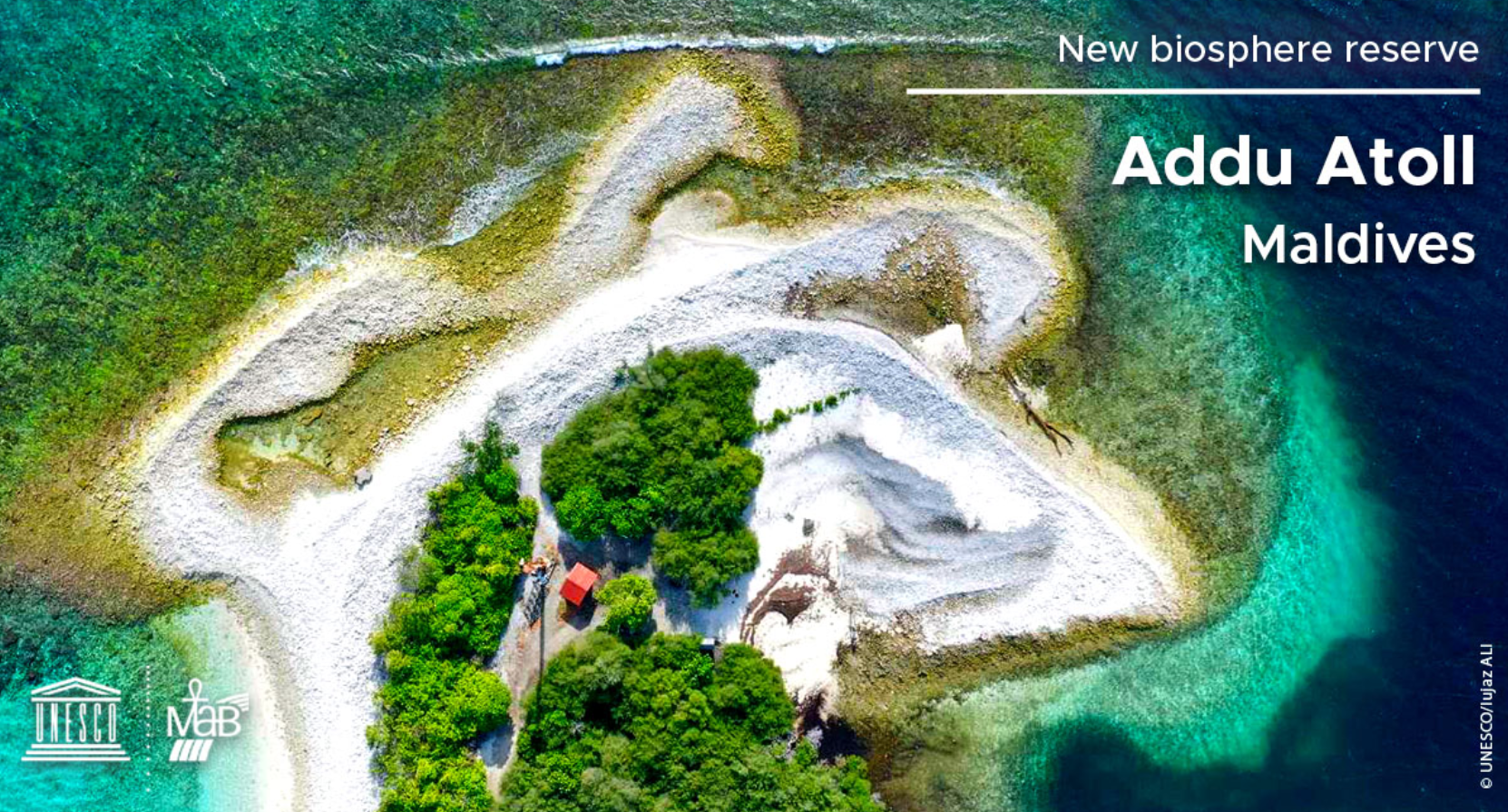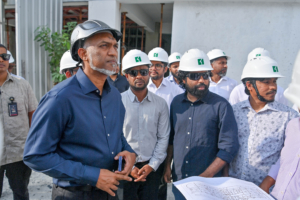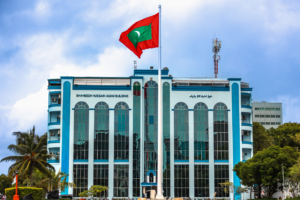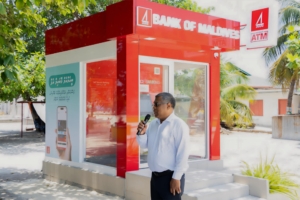Addu City, Maldives — The southern most atolls of Maldives, administratively known as Addu City and Fuvahmulah City have been declared as UNSECO Biosphere Reserves today.
The declaration was made at the 32nd session of the UNESCO International Coordinating Council of the Man and the Biosphere Programme, which took place via a virtual meeting, in which Fuvahmulah, Addu and the Ministry of Environment of Maldives participated remotely.
With this, the number of Biosphere Reserves in the Maldives has increased from one, located in Baa atoll, to three.
Both Addu and Fuvahmulah are home to a diverse variety of ecosystems and habitats ranging from wetlands, fresh water lakes, marshlands as well as multicolored coral reefs and underwater biodiversity. Among this, Fuvahmulah, the single largest natural island, is known for its two large wetlands, Bandaara Kilhi and Dhadimagi Kilhi, along with the infamous Thoondu beach and dense vegetation within the island.
The heart shaped Addu City at the tip of the country, just below the equator is also home to one of the largest wetlands in the entire country – the Eedhigali Kilhi, which is home to hundreds of migratory birds every year. The city also is home to the White Tern, which until fairly recently was only found in the islands of the city.
Nature Parks have been developed in both cities to give better access to the areas for locals and tourists to enjoy and learn more about nature, while conserving the natural existence of the resources sustainably. Among these include boardwalks, canoeing points, walk trails and snorkeling points.
Biosphere Reserves include terrestrial, marine and coastal ecosystems, all classified into three main components – core area, buffer zones, and transitional zones. It is within these zones as man is to co exist with nature will enhancing, learning and protecting the area, while ensuring sustainability in eco-friendly development.





